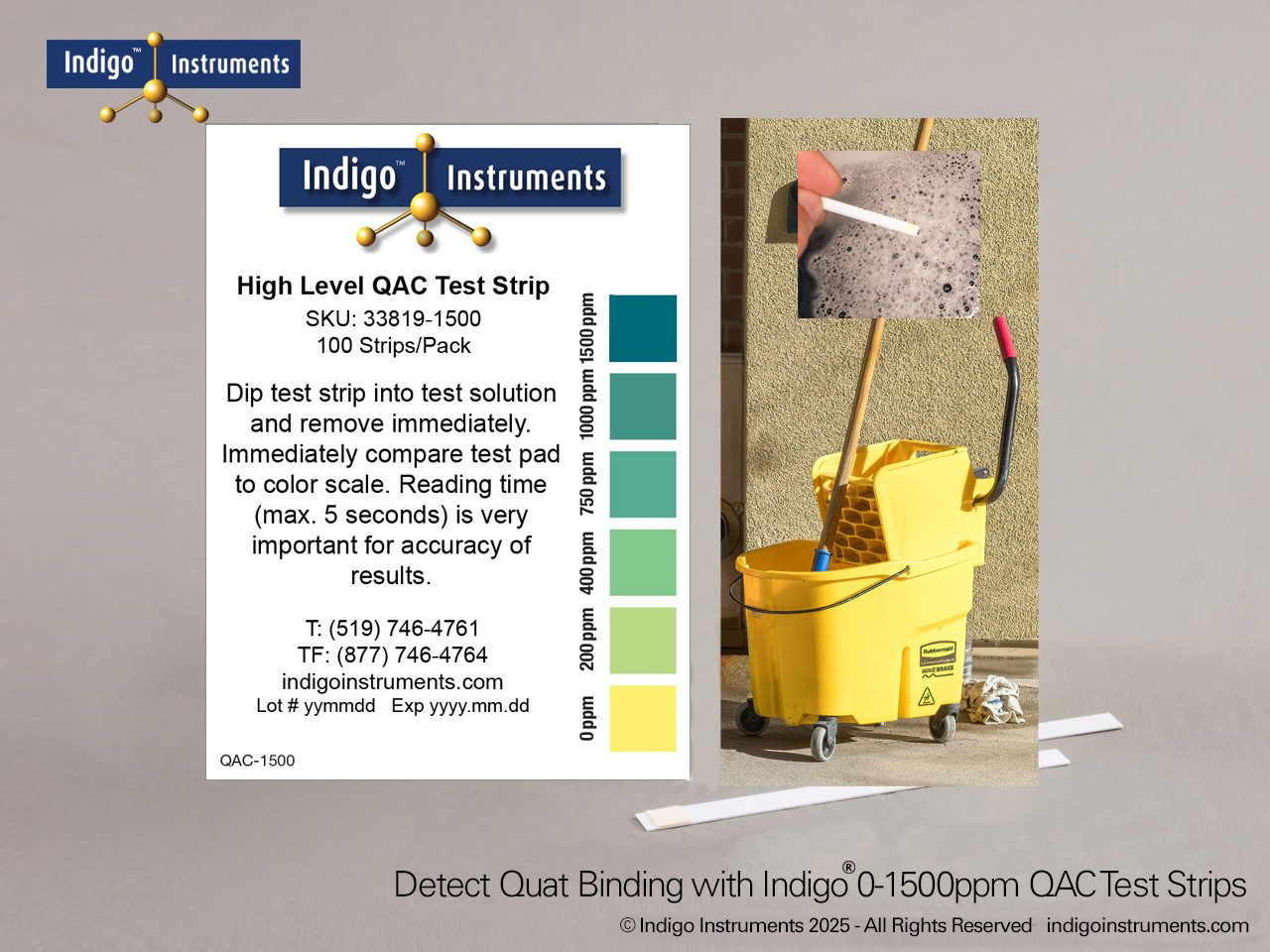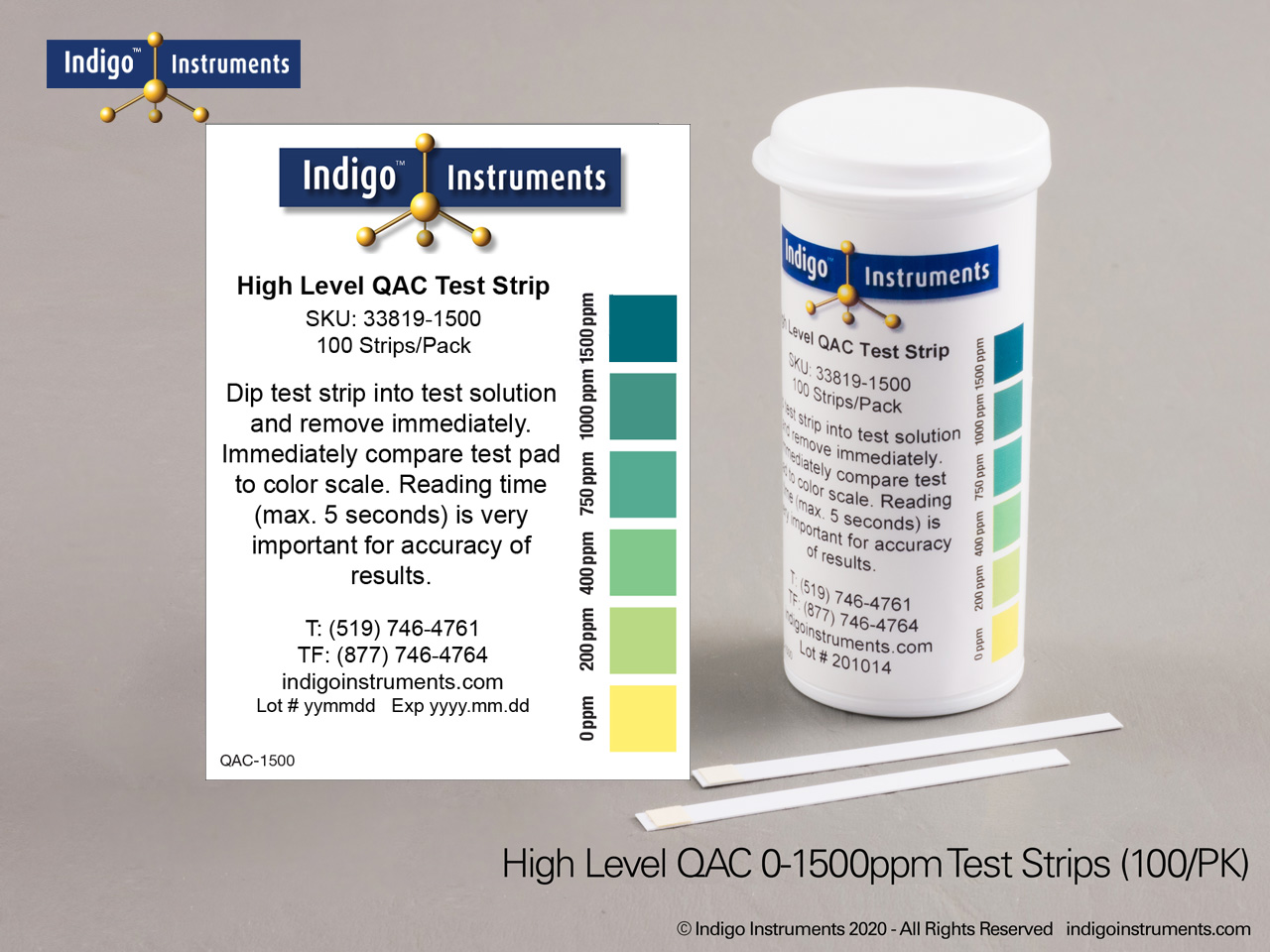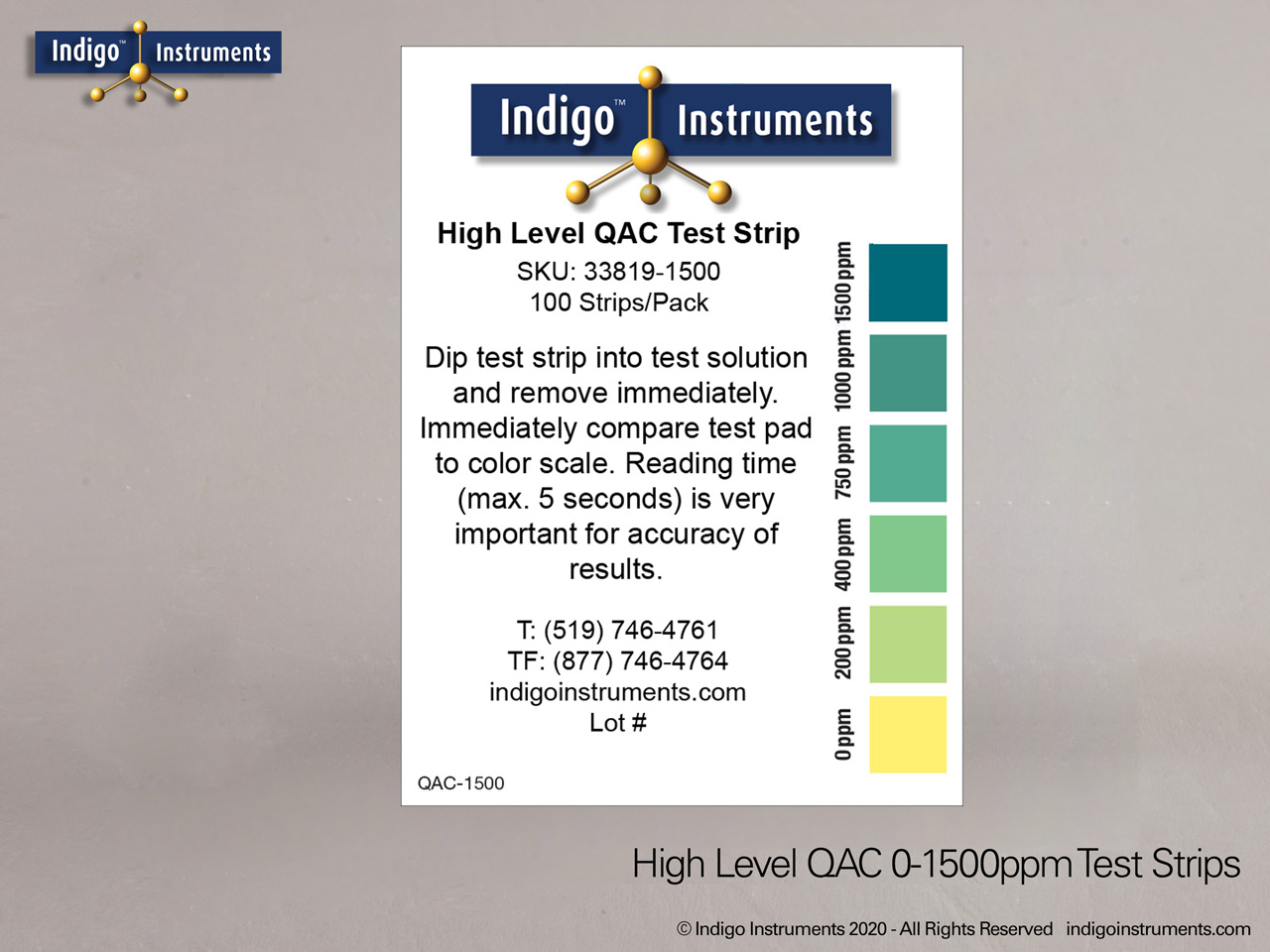Quat Binding Detection Strips
SKU: 33819-1500
Indigo® brand 0-1500ppm QAC test strips can reveal whether your multi-quat sanitizer is compromised by quat binding. Quat binding occurs when quaternary ammonium disinfectants are absorbed by cleaning tools such as cotton mops, cellulose sponges, or microfiber cloths.
These materials have high surface areas that “soak up” the sanitizer, leaving less active quat in your bucket or spray solution. This can result in concentrations well below the target range, even if the sanitizer was mixed correctly. To avoid quat binding, choose cleaning materials that are resistant to absorption, such as polyester, nylon, or polypropylene cloths, mop heads, and scrub pads. Using Indigo® 0–1500 ppm quat test strip to verify that sanitizer levels are effective, regardless of the tools or surfaces in use.
All Indigo® Quat (QAC) test strips come in 100 (not 50) strips per pack & 3 year minimum guaranteed shelf life backed by a Certificate of Analysis, Stability & SDS documents as listed below; Certificate of Conformance on request. Be prepared for any health & safety audit or inspection.



